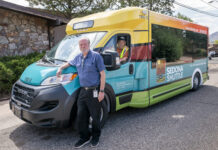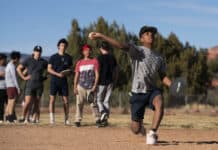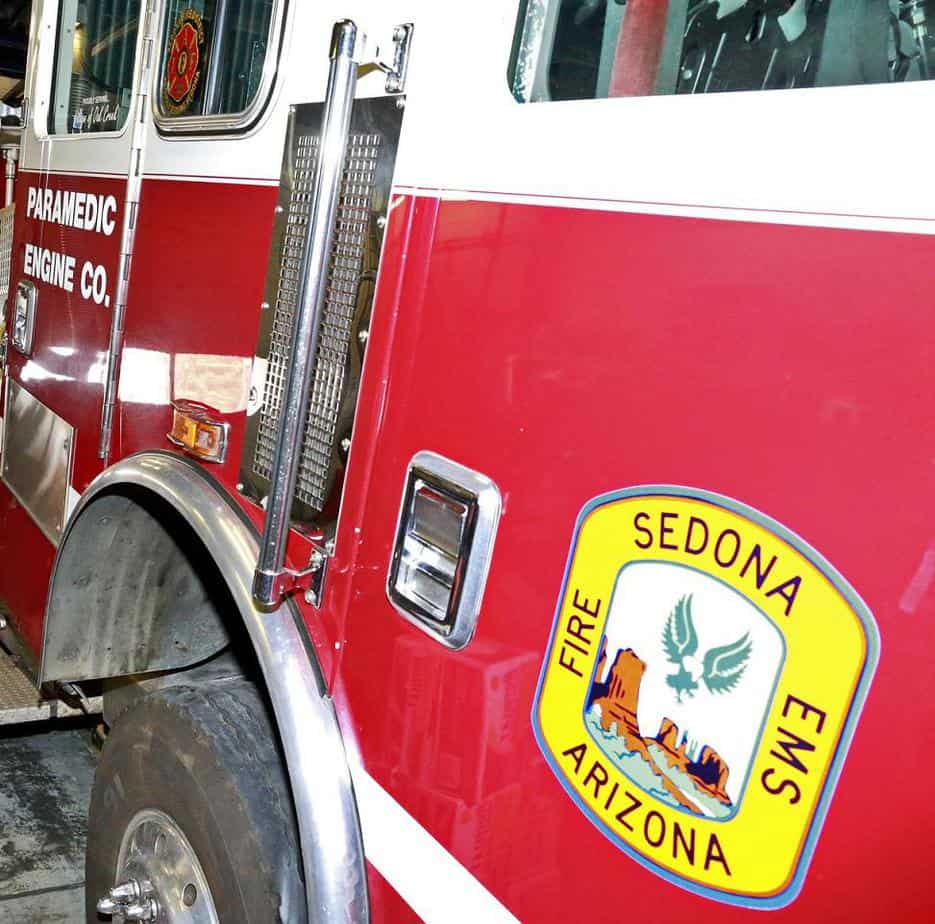Monday, June 20, marked the first official day of summer and with it came record temperatures in many parts of the Southwest. Those high temperatures play a big part when it comes to fire restrictions, wildfires and heat-related illnesses and death.
As fire danger increases, the Sedona Fire District — in conjunction with other local, state and federal agencies — began implementing fire restrictions as of June 15. All open burn permits have been canceled.
These restrictions include all open burning. Fireworks and other pyrotechnic displays are expressly prohibited. Other types of outdoor fires banned include those that produce open flames such as tiki lamps.
“It only takes one spark on dry grass, leaves, branches or pine needles to start a wildfire,” Sedona Fire District Fire Marshal Gary Johnson said. “Even live trees and brush are dry enough to easily ignite. Wildfires impact recreation areas and may destroy homes and cabins and threaten lives.
“Chainsaws, dragging trailer safety chains, carelessly tossed cigarettes, fireworks, abandoned campfires and discharge of firearms are all known causes of wildfire.”
Campfires using wood as a fuel are prohibited but charcoal or coal are still allowed in developed, constantly-attended areas. Petroleum-fueled stoves, lanterns and heaters are allowed as long as that can be turned on and turned off. Enclosed charcoal barbecue grills are allowed, only on private property, when the grill has a tight fitting lid. When used, these items must be in an enclosed area that is free of combustible materials and vegetation and be constantly attended, Johnson said.
Normally, mid-May is when fire restrictions go into effect. This spring there was slightly higher-than-normal rainfall, which delayed the ban. He said he was hoping that the area would have had an even wetter spring resulting in no restrictions as occurred last year.
When determining if or when restrictions will go into effect is a coordinated effort, Johnson said. This way residents and visitors know no matter where they go in the general area that the same rules apply. Things like moisture in the vegetation [specifically grasses that drive fires], temperatures, winds and humidity all factor in when determining if a ban is needed.
The ban also prohibits the outdoor use of equipment that generates open flames or a spark without a permit. During fire restrictions a no-cost permit is required for welding and hot works operations and the use of chain saws within the Sedona Fire District. This permit is available at Sedona Fire District Fire Station No. 1, 2860 Southwest Drive, Monday through Thursday from
7 a.m. to 5 p.m.
Since these restrictions are expected to be in effect until the seasonal monsoon rains arrive, typically beginning in mid-July, all burn permits issued for the spring burn season are canceled.
If you any questions concerning these restrictions, contact the Sedona Fire District at (928) 282-6800.
The Heat Is On
Sedona, like most of the Southwest, has experienced record or near-record temperatures with triple digits expected for at least another week in the Verde Valley. In 2013, OSHA reported that 151 Arizonans died as a result of heat. Four people died this last weekend alone.
The following are tips from the Centers for Disease Control and Prevention:
- Drink more fluids, regardless of your activity level. Don’t wait until you’re thirsty to drink.
- Don’t drink liquids that contain alcohol or large amounts of sugar — these actually cause you to lose more body fluid.
- Avoid extreme cold drinks, because they can cause stomach cramps.
- Stay indoors and, if at all possible, stay in an air-conditioned place. If your home does not have air conditioning, go to the shopping mall or public library — even a few hours spent in air conditioning can help your body stay cooler when you go back into the heat.
- Electric fans may provide comfort, but when the temperature is in the high 90s, fans will not prevent heat-related illness. Taking a cool shower or bath, or moving to an air-conditioned place are much better ways to cool off.
- Wear lightweight, light-colored, loose-fitting clothing.
- Never leave anyone in a closed, parked vehicle.
- Although any one at any time can suffer from heat-related illness, some people are at greater risk than others. Check regularly on: Infants and young children, people aged 65 or older, people who have a mental illness and those who are physically ill, especially with heart disease or high blood pressure.
- Limit outdoor activities during the hottest times of the day.
“One of the challenges we have is that people come here to hike and are not prepared,” Johnson said. “Stay hydrated because by the time you’re thirsty, you’re behind the curve. That’s why when hiking it’s important to take plenty of water, have proper footwear, bring a cell phone, let someone know where you’re going and wear a hat and sunscreen.”



















